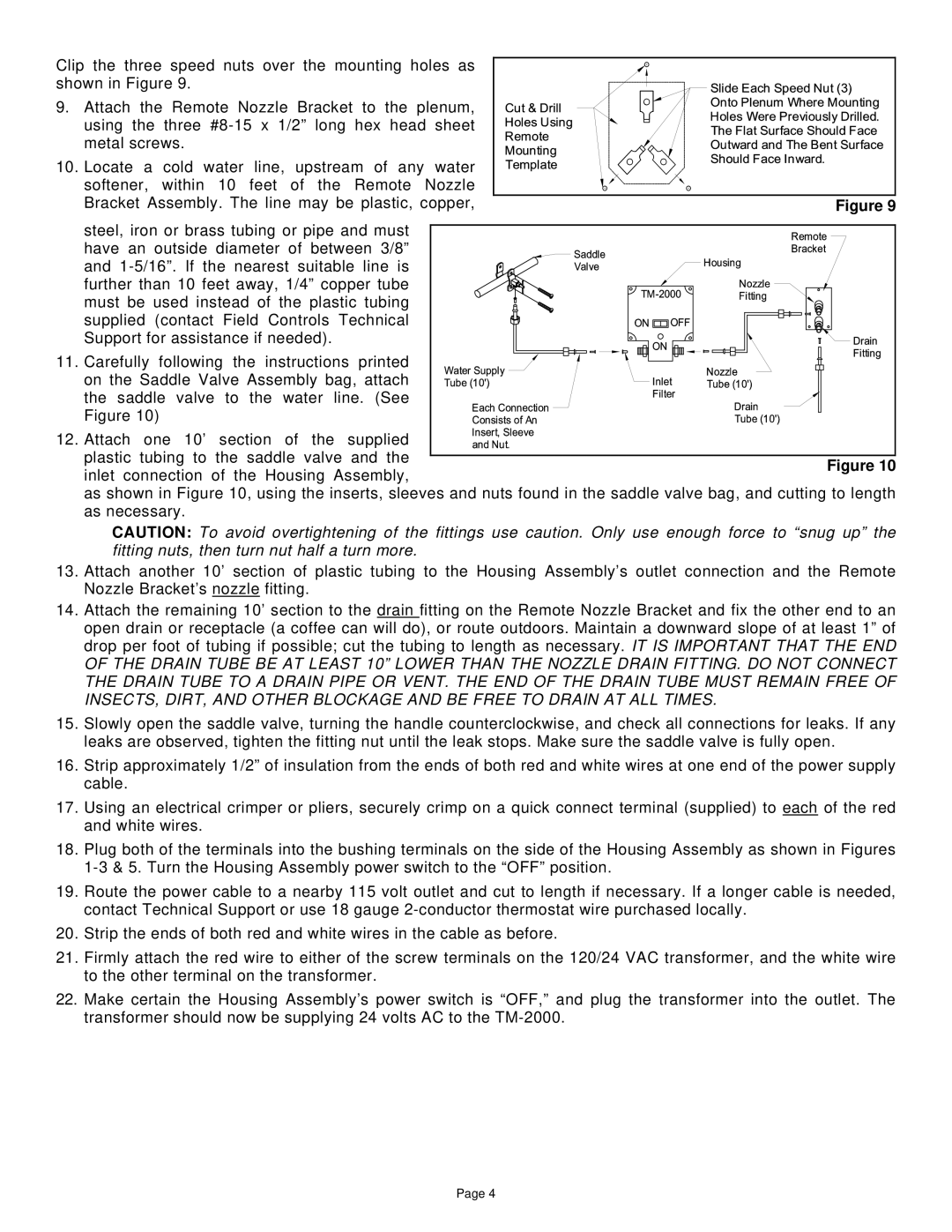TM-2000 specifications
The Field Controls TM-2000 is a sophisticated air management system designed to enhance indoor air quality and energy efficiency in residential and commercial buildings. This advanced system employs cutting-edge technologies to ensure optimal performance and user-friendly operations.One of the main features of the TM-2000 is its ability to effectively reduce airborne contaminants, including dust, allergens, and volatile organic compounds (VOCs). By utilizing a combination of mechanical filtration and advanced air purifying technologies, the TM-2000 helps create a healthier indoor environment. The system is equipped with a high-efficiency filter that captures particulate matter as small as 0.3 microns, ensuring that even the smallest pollutants are removed from the air.
The TM-2000 is designed with smart technology that allows for seamless integration with existing HVAC systems. It features a user-friendly interface that provides real-time monitoring of air quality levels, filter status, and system performance. This allows homeowners and building managers to stay informed and make necessary adjustments to maintain optimal indoor air quality.
Another key characteristic of the TM-2000 is its energy-efficient operation. The unit is engineered to minimize energy consumption while delivering powerful air purification. It incorporates programmable settings, allowing users to tailor operation times and intensity based on their schedules and the specific air quality needs of their spaces. This not only conserves energy but also reduces utility costs, making it an economical option for users.
The TM-2000 also stands out in its versatility. It is suitable for a wide range of applications, from residential homes to office buildings and industrial facilities. Its compact design enables easy installation and maintenance, making it user-friendly for both professionals and end-users.
Safety features are also integrated into the TM-2000, including automatic shutoff capabilities and indicators for filter replacement. These safeguards ensure that the system operates efficiently and protects both the unit and its users.
In conclusion, the Field Controls TM-2000 is a state-of-the-art solution for anyone looking to improve indoor air quality. With its advanced filtration technology, user-friendly interface, energy-efficient operation, and robust safety features, it represents a smart investment for healthier living and working environments.

